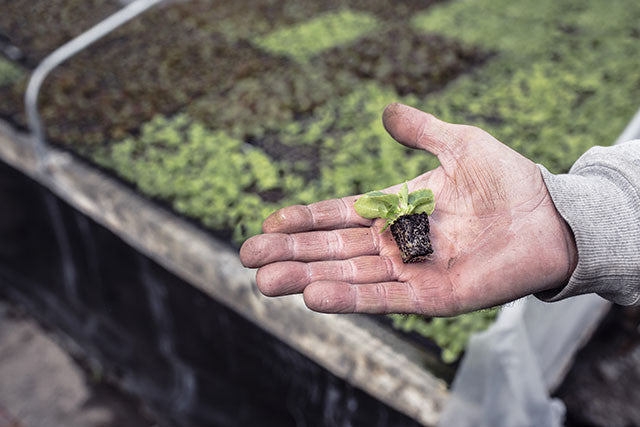
It’s one thing to slowly transform your home into an eco-friendly environment, but how can you control the waste produced outside the home?
Send the kids to school with reusables.
Litterless lunches are becoming the first choice for eco-conscious lifestyles for both families and on-the-go adults.
As more information comes out about the harmful realities of plastic, and the volume of trashed produce by one kid during a school year (it’s 67 lbs!), people are looking for better options. Some schools are even adopting litter-less lunch programs, encouraging families to send reusable containers in lunchboxes and extending breaktime to make sure kids are eating a full meal.
Eco-friendly And Convenient
We had a customer come in looking for snack containers. “My kid has their snack outside at recess. They can’t take glass or plastic out on the playground.”
This was becoming a real problem. Litterless lunches only work if they’re convenient for kids that never stop moving.
We searched for Canadian products that allow for the convenience of on-the-go snacks with the eco-consciousness of reusable food storage. We landed on the Colibri products by two sisters from Manitoba.
These reusable bags come in different sizes and a whole host of fun patterns. There’s even a long size perfect for wraps or burritos. They seal with a zipper closure easy enough for little hands and have a liner that can be pulled out for washing and drying in between uses.
And the best part is kids can take them onto the playground, finish their snacks, and stuff the bag in their pocket. No need to call a timeout to run to the garbage can!
Going Litterless: How To Get Started
Getting started with a litterless lunch household doesn't need to be complicated or expensive. As with everything, start small, focus on one aspect and build out from there.
- Pick a starting point. Maybe you want to make recess easier. Go for snack bags instead of individually wrapped cookies. Or maybe you want to start with drinks. Send them with a reusable water bottle instead of juice boxes.
- Choose your material. You’ve got options including plastic, glass, stainless steel or washable fabric. If you go the plastic route, make sure you’re buying the right kind (more on that in a minute).
- Plan, plan, plan. It won’t happen overnight, but planning ahead with dinner leftovers or other packable food eliminate the morning lunch crunch. Get kids involved and keep it simple!
- Avoid the aisles. Grocery stores are already built and organized for your litterless lunch needs. Those centre aisles contain the processed, individually packaged items you’re trying to avoid. So just stick to the outside and choose whole foods. Fruit even comes in its own natural packaging!
- Rinse and repeat. Getting into a routine for packing a litterless lunch is the best way to make it a habit.
Not All Plastic Created Equal
Maybe you already take lunch in reusable containers. You got a screaming deal on a 24 pack from the dollar store and you stuff your leftovers in there, pop it into the microwave at work and carry on with your day. But what’s leaching into your food with every reuse of that one-time-use plastic?
You know we’ve done the research. Here are our main points for which plastics are safe to reuse, and which to avoid.
Type 1: Polyethylene Teraphthalate - Single Use Only
These are your salad dressing bottles, water bottles, and peanut butter jars. It is clear and smooth plastic, designed for single use only.
Type 2: High-Density Polyethylene - Safe
Look for this in your milk jugs and grocery store bags. It’s also found in freezer bags and detergent bottles. It doesn’t contain BPA or phthalates which are known to be harmful. It can be reused safely and is easy to recycle if done right.
Type 3: Polyvinyl Chloride - Steer Clear
*Contains Phthalates
Sometimes this plastic comes in the form of PVC pipes and siding. Other times it’s in your cooking oil bottles and juice boxes. It’s considered one of the worst plastics because of its phthalate content. This plastic is in everything — it’s the toy your toddler shoves in his mouth and the clear wrap on your store bought chicken.
Type 4: Low-Density Polyethylene - Safe
Found in grocery bags, condiment squeeze bottles, and frozen food packaging. This plastic doesn’t contain harmful chemicals like BPA or phthalates. This makes it okay to reuse but tricky to recycle. Look for places that will recycle this plastic when you’re done with it.
Type 5: Polypropylene - Safe
Find this plastic in baby bottles, yogurt containers, and reusable plastic. It’s flexible, hard, and semi-transparent. It has no harmful chemicals to leach into your food or beverages so it’s generally safe to reuse and fairly recyclable.
Type 7: Polycarbonate - Steer Clear
*Contains BPA
This is the plastic you’ve heard so much about. It’s hard and durable — often used in to-go coffee mugs and reusable water bottles for its shatter-proof quality. Read the bottom; many to-go containers that used to contain this plastic are now advertised as “BPA free.”
Still have questions about which containers are safe to send in your litterless lunch? We don’t stock anything that could be harmful to you or the environment. Ask us and we’ll be able to steer you in the best direction for your household.

